





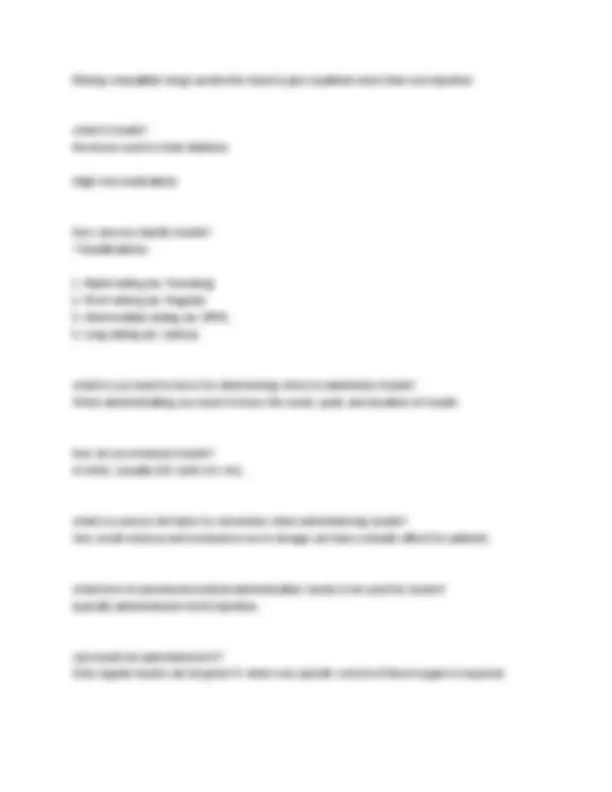





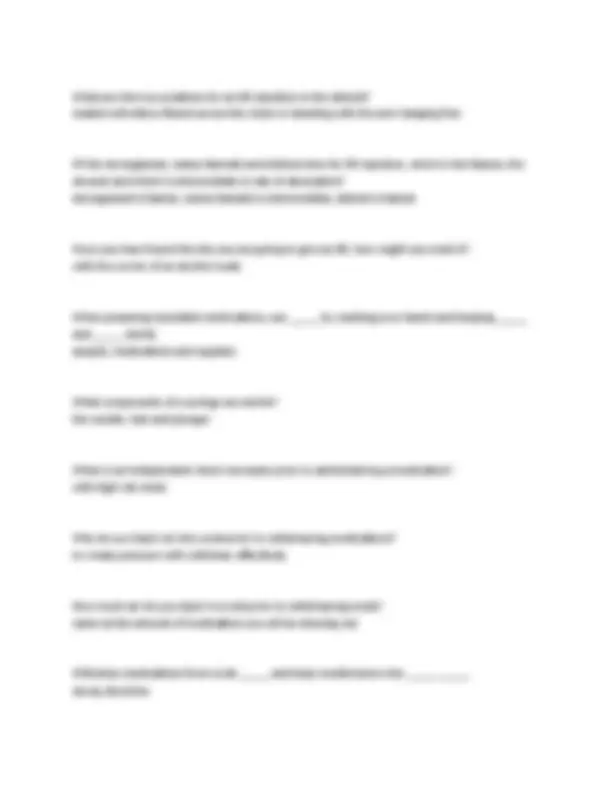




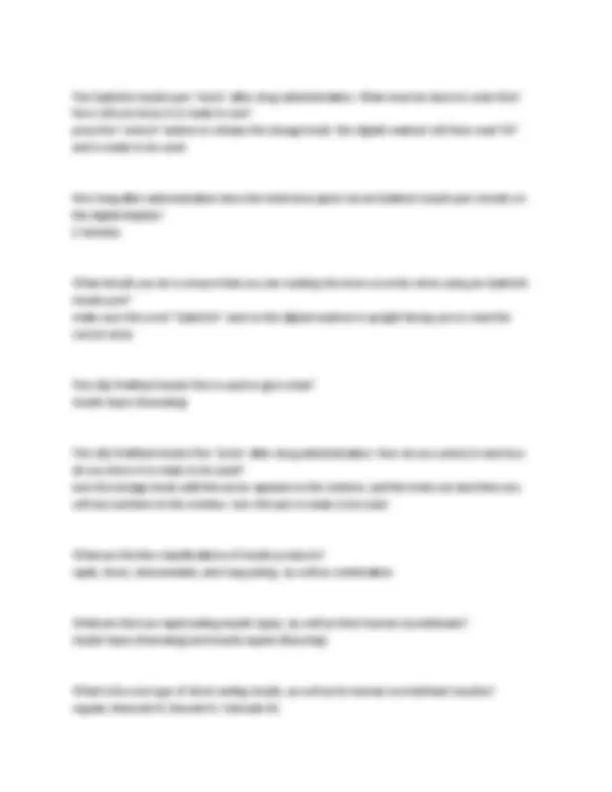
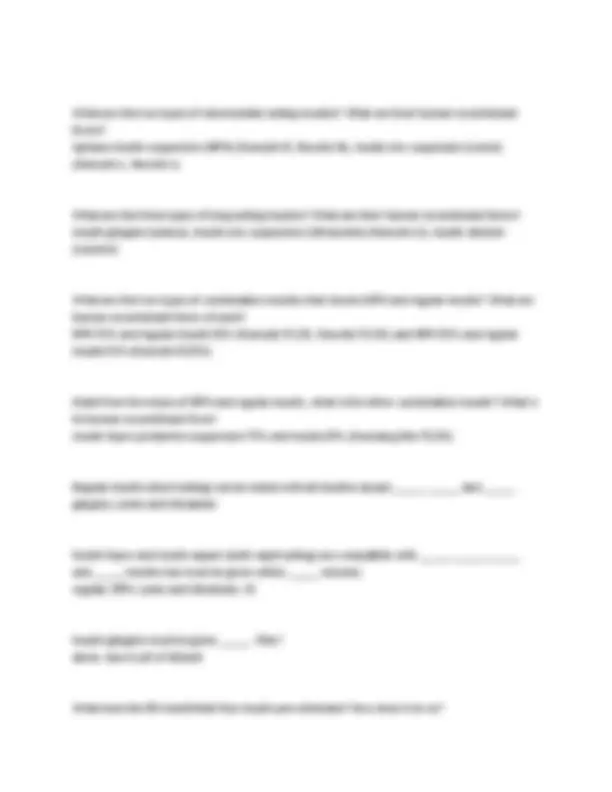
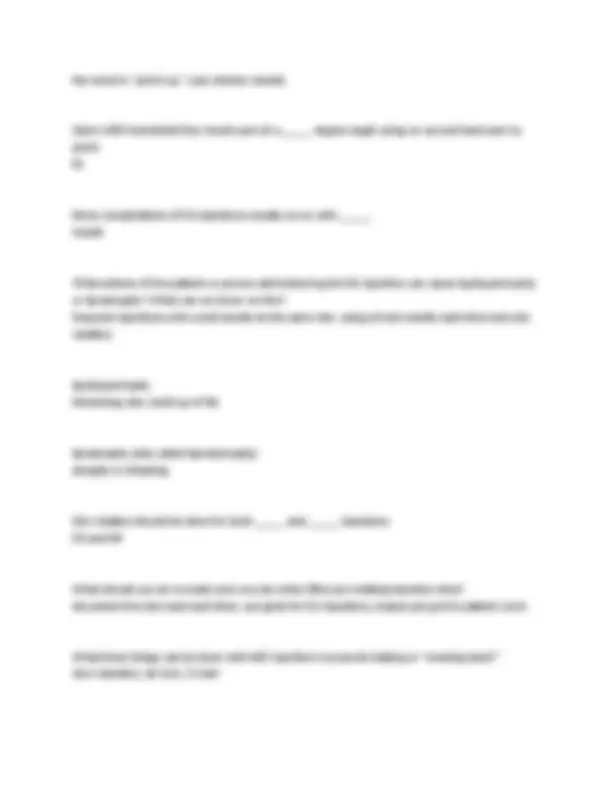


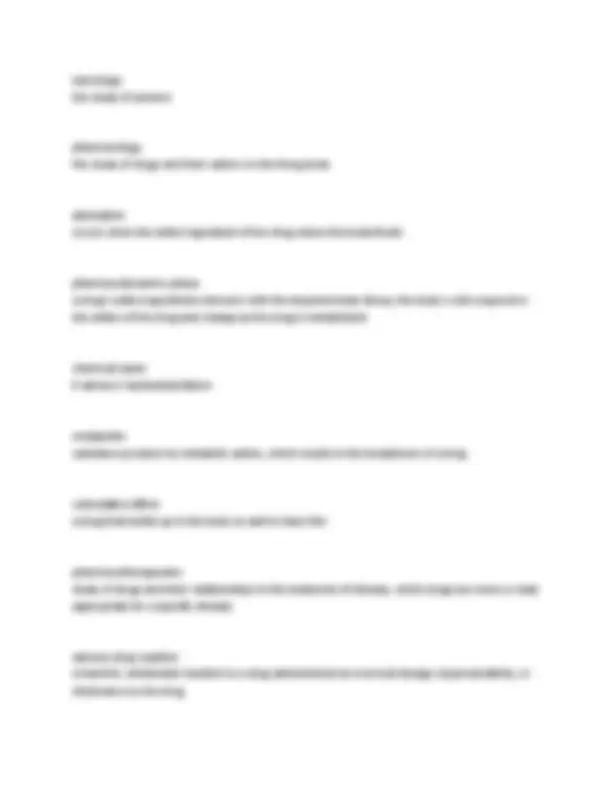







Study with the several resources on Docsity

Earn points by helping other students or get them with a premium plan


Prepare for your exams
Study with the several resources on Docsity

Earn points to download
Earn points by helping other students or get them with a premium plan
Community
Ask the community for help and clear up your study doubts
Discover the best universities in your country according to Docsity users
Free resources
Download our free guides on studying techniques, anxiety management strategies, and thesis advice from Docsity tutors
Case Study Oral and Parenteral Medication Administration, Skills & Reasoning (Latest 2025) Define Parenteral Administration administration of medication by injection into body tissue what type of procedure is parenteral administration? Invasive Procedure parenteral administration is an invasive procedure. - what is the increased risk of this procedure, and what do we do to prevents that risk? A. increase risk of infection, B. use asepsis C. wear gloves
Typology: Exams
1 / 35

This page cannot be seen from the preview
Don't miss anything!




























Define Parenteral Administration administration of medication by injection into body tissue what type of procedure is parenteral administration? Invasive Procedure parenteral administration is an invasive procedure.
what equipment can be used for parenteral medication? 1.Needles
what are general tips for injections?
---Needle length depends on amount of subcutaneous tissue what method is recommended to reduce tissue irritation during IM injections? the Z-Track method what are the six steps to IM injections?
when do you use the z-track method? For all intramuscular injections, use the Z-track method to prevent tissue irritation caused when medication leaks into subcutaneous tissues what is the purpose of the z-track method? Seals the medication in muscle tissue how do you perform the z-track method?
Mixing compatible drugs avoids the need to give a patient more than one injection what is Insulin? Hormone used to treat diabetes (high risk medication) how can you classify insulin? *Classifications:
what are the characteristics of an insulin syringes? syringes hold 0.3 to 1 mL & have a pre-attached needle that cannot be removed when will different forms of insulin be mixed? to give better control of blood sugars what does the typical mixed insulin injection include? Typical insulin that are mixed are intermediate (NPH) and short acting (regular)
What is the three-step approach to dosage calculations?
What is the most common unit for measuring insulin? U-100, which means 100 units per mL. What should you do when calculating dosages for injectable solutions? Round dosage calculations to the nearest 10ths for mL and to 100ths for less than 1 mL. What is the formula for calculating dosages? D x Q = Amount to give, where D is the desired dose and Q is the quantity. What should you look for when reading medication labels? Look for the smallest dosage available. What is the significance of accuracy in insulin administration? Errors can be life-threatening. What is the importance of estimating before applying any formula in dosage calculations? It helps to catch potential math errors before they affect the calculation. The subcutaneous route involves injection into _____ tissue. adipose What is the typical syringe size for a SQ injection? 1 - 2 mL What are medications that are typically given SQ? (5) heparin, lovenox, arixtra, insulin, neupogen What is arixtra? Neupogen?
What is the range of needle lengths for SQ injections? 3/8 to 5/8 inch How does the RN decide the needle length for a SQ injection? pinch the tissue and use half the width of the fold How does the RN decide what angle to insert the needle when giving a SQ injection? based off of how thick the fold of skin is when they pinch the tissue. for 1 inch, use a 45 degree angle. for 2 inches, use a 90 degree angle. We have an expert-written solution to this problem! Why do IM injections get absorbed more quickly? secondary to the increased blood flow to muscles than subcutaneous tissue What is the typical size syringe used for a IM injection? 1 - 3 mL What are four types of medications typically given IM? pain medications, antibiotics, vaccines, vitamins (commonly B12) What is the characteristic of sites typically chosen for IM injection? well-developed muscles The deltoid is the _____ muscle used for an IM injection, so therefore the _____ volume is used. smallest for both What is the preferred site of IM injection for infants-1.5 year olds? vastus lateralis
What is the preferred site for IMs (for anyone older than 1.5 years old)? Why? ventrogluteal. no major nerves, bones, or blood vessels What site poses the most risk for an IM? dorsogluteal What is the amount usually given in an IM? What happens if more than this is given? 2 - 3 mL. can cause abscesses or tracking. Two to three mL is the amount usually given via IM injection. What about to less developed muscles though? 1 - 2 mL Although it varies by age, site and the medication being administered, what is the usual needle gauge used for an IM injection? 21 - 23 The typical needle gauge used for an IM is 21-23. What about for peds? For the deltoid? For a viscous medication such as penicillin? 22 - 25. 23-25. 20. What is the typical needle length used for an IM? What about if it is to be given in the deltoid? To a pediatric patient? When might it have to be longer? 1 - 1.5 inches. 1 inch. 5/8-1 inch. for obese patients. How are intramuscular sites landmarked? using bones
anterior and lateral to the femur What are the two bony landmarks for the vastus lateralis site for IMs? greater trochanter, lateral knee Where do you inject an IM in the vastus lateralis site in relation to your two bony landmarks? inject in the middle third between the two points What age group is the vastus lateralis site traditionally used in? peds, choice for 1 year and younger because the other muscles are not well-developed yet What is a positive for the vastus lateralis site of IM injection? no major blood vessels How is the patient positioned for an IM injection in the vastus lateralis? supine with knees slightly flexed What are the two landmarks used for IMs given in the deltoid? acromion process and the midpoint of the lateral upper arm Where do you inject for an IM in the deltoid? 1 - 2 inches below the acromion process OR in the center of the imaginary upside down triangle What is one pro and one con for the deltoid as an IM site? con--injection into nerve or vessel. pro--rapid. An IM into the deltoid requires the use of a _____ needle. shorter
What are the two positions for an IM injection in the deltoid? seated with elbow flexed across the chest or standing with the arm hanging free Of the dorsogluteal, vastus lateralis and deltoid sites for IM injection, which is the fastest, the slowest and which is intermediate in rate of absorption? dorsogluteal is fastest, vastus lateralis is intermediate, deltoid is fastest Once you have found the site you are going to give an IM, how might you mark it? with the corner of an alcohol swab When preparing injectable medications, use _____ by washing your hands and keeping _____ and _____ sterile. asepsis, medications and supplies What components of a syringe are sterile? the needle, hub and plunger When is an independent check necessary prior to administering a medication? with high risk meds Why do you inject air into a vial prior to withdrawing medications? to create pressure with withdraw effectively How much air do you inject in a vial prior to withdrawing meds? same as the amount of medication you will be drawing out Withdraw medications from a vial _____ and keep needle below the _____ _____. slowly, fluid line